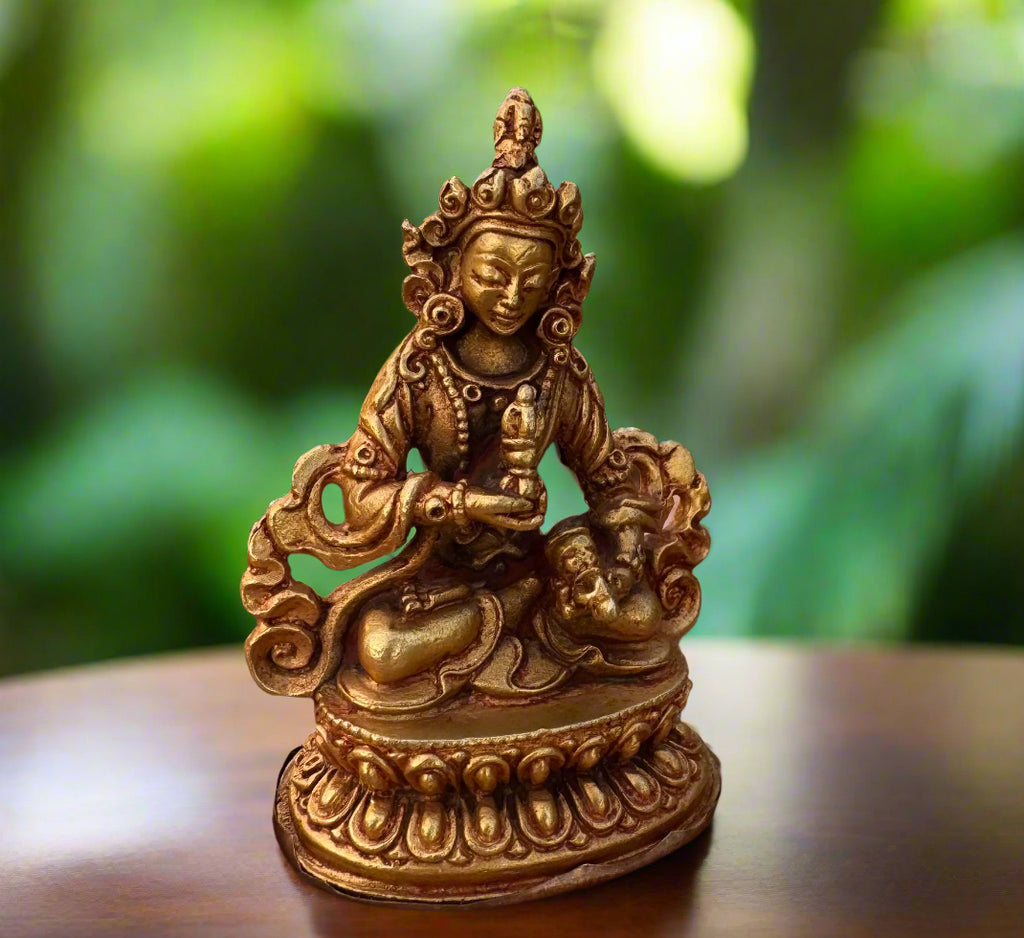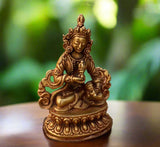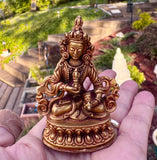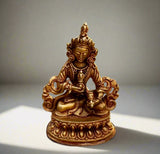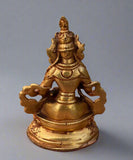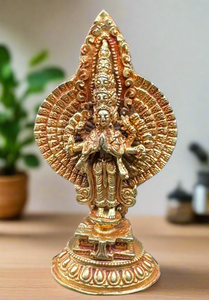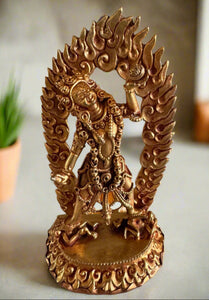Vajrasattva #10
Vajrasattva also known as Dorje Sempa in Tibetan is the buddha of purification. Beautiful statue sitting on double Lotus throne. Great detail, hand made in Nepal. Size: 2.15"tall and 1.5"wide bottom.
Vajrasattva is a significant figure in Tibetan Buddhism, particularly in the context of Vajrayana or Tantric Buddhism. Known as the "Diamond Being" or "Adamantine Being," Vajrasattva represents the embodiment of purity and the practice of purification. Here are some key aspects of Vajrasattva:
1. **Symbolism and Iconography**: Vajrasattva is often depicted as a peaceful, white-colored deity adorned with various ornaments. He typically holds a vajra (thunderbolt) in his right hand, symbolizing indestructible power and skillful means, and a bell in his left hand, representing wisdom and emptiness.
2. **Mantra**: The Vajrasattva mantra is a powerful tool for purification and is recited to cleanse negative karma and impurities. The full 100-syllable mantra is highly revered, though a shorter version, "Om Vajrasattva Hum," is also widely used.
3. **Practice and Meditation**: Vajrasattva meditation is a common preliminary practice in many Tibetan Buddhist traditions. Practitioners visualize Vajrasattva above their heads, and as they recite his mantra, they imagine purifying nectar flowing down from him, cleansing them of negative actions, thoughts, and obscurations.
4. **Role in Ngöndro**: Vajrasattva practice is one of the main components of Ngöndro, the preliminary practices in Tibetan Buddhism. It is used to purify the mind and prepare the practitioner for more advanced practices.
5. **Buddhist Scriptures**: Vajrasattva is mentioned in various Buddhist texts and tantras, where he is often regarded as a primordial Buddha or an important bodhisattva associated with purification.
In essence, Vajrasattva is a central figure in Tibetan Buddhist practice, embodying the principles of purity, transformation, and the eradication of negative karma through dedicated practice and recitation of his mantra.

